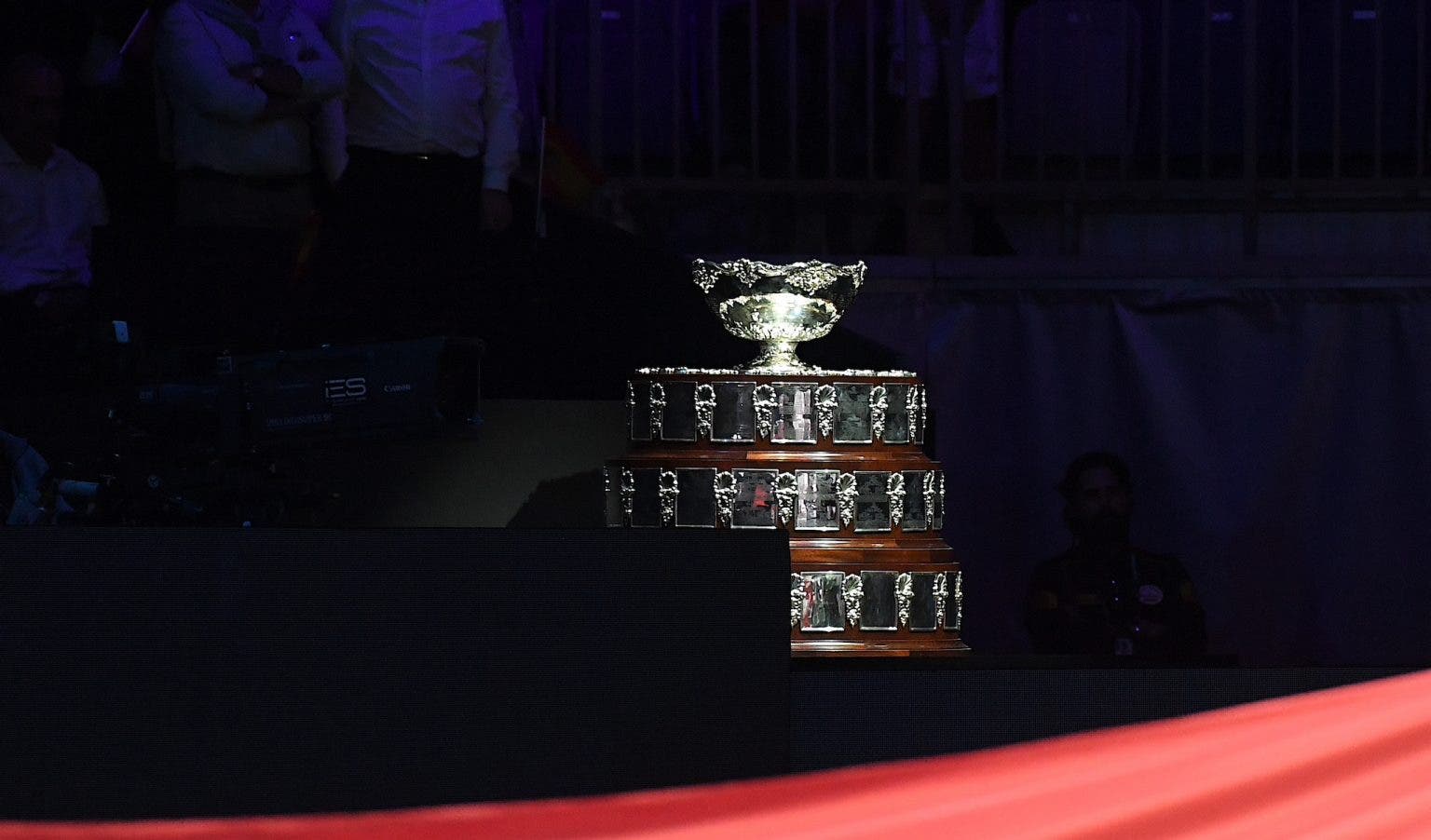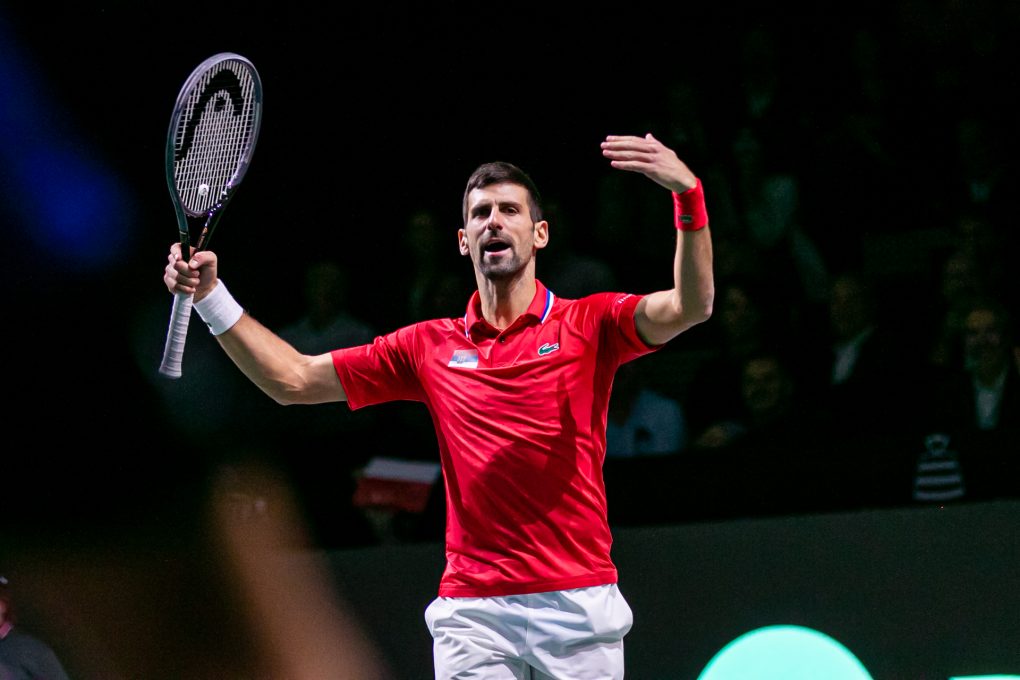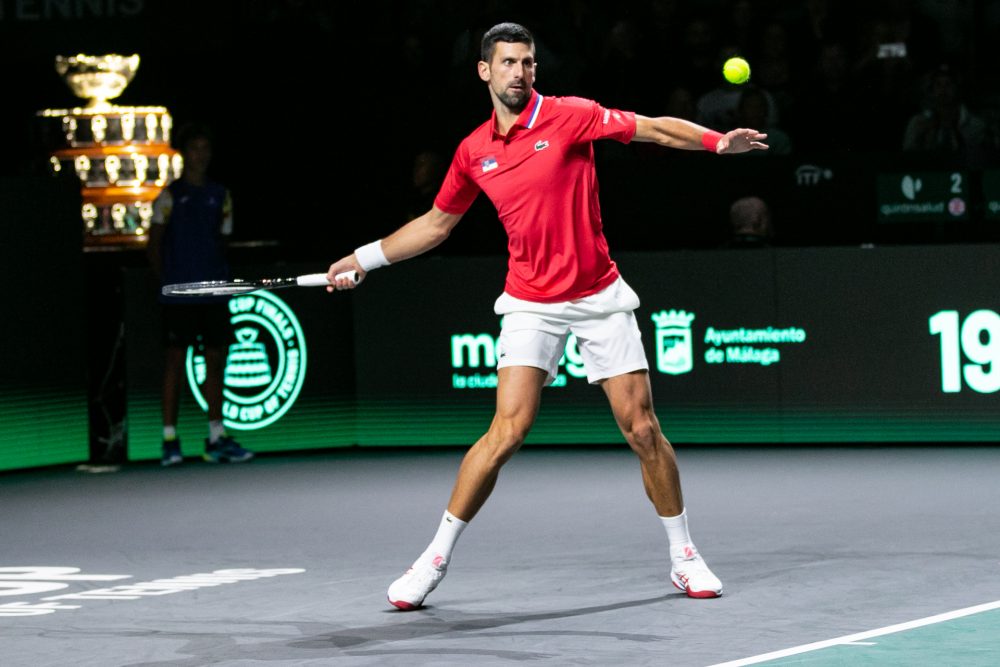TENNIS – The Stade Pierre Mauroy will be the stage for the eagerly-awaited Davis Cup Final between France and Switzerland from Friday to Sunday. The Draw took place at the Chambre de Commerce in Lille. Stan Wawrinka will face Jo Wilfred Tsonga in the opening match on Friday afternoon. Roger Federer will take on Gael Monfils in the second singles match. Diego Sampaolo
France and Switzerland will square off against in the Davis Cup for the 12th time in front of 27000 spectators. The French team won 10 of their previous 12 head-to-head matches in this event. Switzerland won their only matches in 1992 in the quarter finals in Nimes with 3-2 and in 2003 again in the quarter finals in Toulouse with 3-2. France won their most recent match in 2004 when Nicolas Escudé won the fifth rubber match to clinch the 3-2 win in the quarter finals. France made its last appearance in a final in 2010 when They lost to Serbia 2-3 in Belgrade. In that match Michael Llodra fell to Viktor Troicki in the decisive fifth singles match
France qualified to the final with a 5-0 win over Australia in the first round, followed by a 3-2 win over Germany in the quarter finals and a 4-1 win over Czech Republic in the semifinal. Switzerland beat Serbia 3-2 in the first round before two more 3-2 wins over Kazakhstan in the quarter final and Italy in the semifinal.
Stan Wawrinka and Jo Wilfred Tsonga will open the programme on Friday afternoon. Tsonga leads over Wawrinka with 3-2 in their previous head-to-head matches but they are tied 2-2 on clay, the surface where the Davis Cup Final will be played. They have not met for 18 months. In their last match Wawrinka won a quarter final on clay in Madrid in May 2013.
In the second match Roger Federer will face Gael Monfils in a re-match of the US Open quarter final where the Swiss legend recovered from two sets down to win in five sets with 4-6 3-6 6-4 7-5 6-2. In this match Federer had to save two match points. In the other previous match played in 2014 Federer beat Monfils 6-4 4-6 6-3 in the Round of 16 in Cincinnati. Federer leads over Monfils 8-2 in their previous head-to-head matches and 4-0 on clay.
On Saturday Benneteau and Gasquet will play against Marco Chiudinelli and Michael Lammer.
Federer will face Tsonga in the first reverse rubber on Sunday afternoon. Federer leads 11-5 over Tsonga in their previous head-to-head matches and leads 2-1 on clay. This year Federer beat Tsonga in the Round of 16 at the Australian Open and in the quarter finals in Monte-Carlo but the Frenchman won their last match in the Toronto Master 1000 final last August.
The second reverse rubber match will be played between Wawrinka and Monfils. They tied 2-2 in their previous head-to-head matches but they never squared off against on clay.
The home team will be bidding to their 10th Davis Cup Trophy and their first since 2001. The French team played their last Davis Cup Final in 2010 when they lost 3-2 against Serbia in Belgrade. If the home team wins this weekend, they will overtake Great Britain as the third most successful team in history behind the USA (32 titles) and Australia (28).
The Swiss team are looking to win their first ever Davis Cup Trophy in their first final since 1992 when the red-crossed team formed by Jakob Hlasek and Marc Rosset lost 1-3 in Fort Worth against a star-studded US team formed by André Agassi, Pete Sampras, Jim Courier, John McEnroe
While the strong French team can count on the extraordinary depth with five players ranked inside the top-30 in the world ranking: Jo Wilfred Tsonga, Gael Monfils, Julien Benneteau, Richard Gasquet and reserve player Giles Simon, Swiss hopes will be carried by two formidable top-4 players Roger Federer and Stan Wawrinka who played a hard-fought semifinal at the ATP World Tour Finals in London.
There is a question mark on Federer’s fitness after the Swiss Maestro was forced to withdraw from last Sunday’s Final in London against Novak Djokovic because of a back injury.
Federer trained on Wednesday evening and on Thursday afternoon and seems to be recovered from the back injury and ready to play against Monfils on Friday afternoon.
“It was not good enough to practice yesterday. I wish progress would be faster but we are trying hard. We are heading in that direction. It’s definitely better that it was on Saturday. Baby steps. I am hopeful. I cannot give any percentage As long as you are not on court practicing, you have no references. I am making some progress but I don’t have a month ahead of me to get better. I need to get better quickly. I am trying to get better”, said Federer at the press conference in Lille on Tuesday.
Federer was asked about the ill feeling between him and Wawrinka after their epic and tense semifinal in London.
“We had a conversation after the match. Everything is totally relaxed about the situation. We have Severin as a coach and Davis Cup coach and friend who was there. There are no hard feelings whatsoever. We are having a good time here. We are friends, not enemies. It was probably one of the heat-of the moment situations. I don’ think from this point forward there is much to say about it anymore”, said Federer
Federer will be looking to add the Davis Cup Trophy to his 17 Grand Slam titles, his six ATP Finals wins and his Master 1000 wins. The Davis Cup is one of the very few missing titles from his impressive collections. If he wins the Davis Cup, he will join many tennis legends who triumphed in this tournament. The long list features Fred Perry, Rod Laver, Arthur Ashe, Bjorn Borg, Boris Becker, Mats Wilander, Pete Sampras, André Agassi, John McEnroe, Stefan Edberg, Rafa Nadal and Novak Djokovic.
Federer won all his five singles matches this year and boasts a 48-16 career record in all his Davis Cup singles matches. He could overtake Jakob Hlasek as the most successful Swiss player in this event
This weekend’s final could be one of the last chances for the Swiss team to lift the Davis Cup Trophy after a formidable year for both Federer and Wawrinka. Federer won five ATP titles and played in 11 finals ending the year in second place behind Novak Djokovic. Wawrinka won his first ever Grand Slam title at the Australian Open and his first Master 1000 title in Monte-Carlo. Wawrinka owns a 20-13 record in singles matches Wawrinka contributed to the 3-2 win in the semifinal against Italy in the semifinal in Geneva with his singles win over Fabio Fognini.
French captain Arnoud Clement has named two top-20 players Jo Wilfred Tsonga (World Number 12) and Gael Monfils (19). Tsonga beat Federer in the Toronto Master 1000 Final last August. Monfils reached two Grand Slam quarter finals this year at the French Open and the US Open.
Gasquet contributed significantly to the French win against Czech Republic in the semifinal held last July on the Phillip Chatrier court, the venue of the Roland Garros in Paris last September, with a singles win over Tomas Berdych in three sets before teaming up Tsonga in the doubles.
Clement nominated Julien Benneteau, who is ranked World Number 25 in singles and Number 5 in doubles. Benneteau could be very important in the doubles match. He won the doubles title at the Roland Garros together with Edouard Roger-Vasselin and reached the semifinals in the doubles at the ATP Finals in London last week.
France won nine titles and lost seven finals in the previous 16 final appearances in the Davis Cup. The first French triumph dates back to 1927 with a team formed by Henry Lacoste, Jean Borotra, Henry Cochet and Jacques Brugnon.
Borotra, Cochet and Brugnon won five more titles between 1928 and 1932. Fifty-nine years after France triumphed against the USA on home soil with 3-1 in Lyon with a team formed by Guy Forget, Henry Leconte, Arnaud Boetsch and Fabrice Santoro. Two more titles followed in 1996 in Malmoe when they beat Sweden 3-2 (Guy Forget, Arnaud Boetsch and Fabrice Santoro) and 2001 when they beat Australia 3-2 in Melbourne (Cedric Pioline, Fabrice Santoro, Nicolas Escudé, Sebastian Grosjean and Arnaud Clement.
Clement will be bidding to win the Davis Cup first as player and then as coach of the French team.
Federer and Wawrinka won the Olympic doubles title in Beijing in 2008 but they have rarely played together since then. In Davis Cup their doubles record is 2-4 when they played together. They are 16-10 in all competitions.
The Stade Pierre Mauroy will play host to the much-awaited Davis Cup Final in front of 27000 enthusiastic fans. The Stadium with its retractable roof is home to the Lille Metropole Football Team and hosted matches of the UEFA Champion’s League and a rugby test match between France and Argentina. The Stade Pierre Mauroy is named after the Mayor of Lille from 1973 to 2001 and served as Prime Minister in the Government of French President Francois Mitterrand. in the early to mid-1990s
“The stadium is beautiful. That’s the first thing that strikes you. It’s very big. It’s wonderful to be able to play on such a court”, said Richard Gasquet.
“There has been a great excitement especially since the semifinal in Roland Garros when we qualified. When the players came here, they were very eager to see the stadium. My players have been training together during the past 10 days in Bordeaux. Julien came and joined us after the ATP Finals in London . He is very fit and adapted very well to the clay”, said French captain Arnoud Clement.
Arnaud Clement was asked if the uncertainty concerning Roger Federer’s fitness could change the French team. “We are not thinking that Roger will not play on Friday. We have been preparing for 10 days and we are prepared to play the Swiss team with Federer and Wawrinka. Many people asked about Federer, even before Federer pulled out on Sunday. What we are going to play is not Federer’s team, it is the Swiss team. They have good players. This is the reason we we are preparing for the past 10 days because we want to be at our best to beat that team, which is the favourite for the time being”.

 Hot Topics3 days ago
Hot Topics3 days ago
 Latest news3 days ago
Latest news3 days ago
 Hot Topics2 days ago
Hot Topics2 days ago
 Hot Topics3 days ago
Hot Topics3 days ago
 Focus2 days ago
Focus2 days ago
 Focus2 days ago
Focus2 days ago
 Focus3 days ago
Focus3 days ago
 Hot Topics2 days ago
Hot Topics2 days ago





























